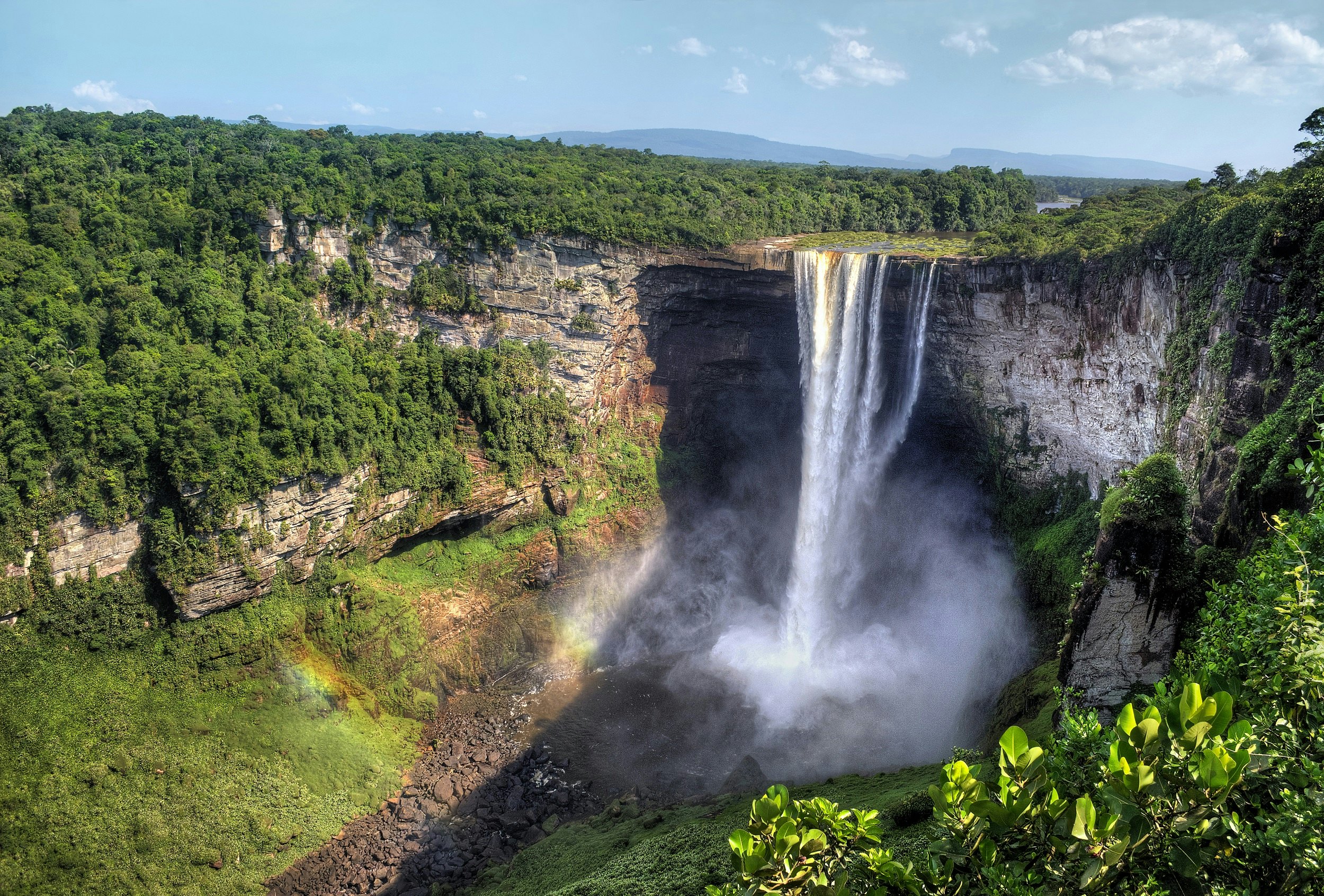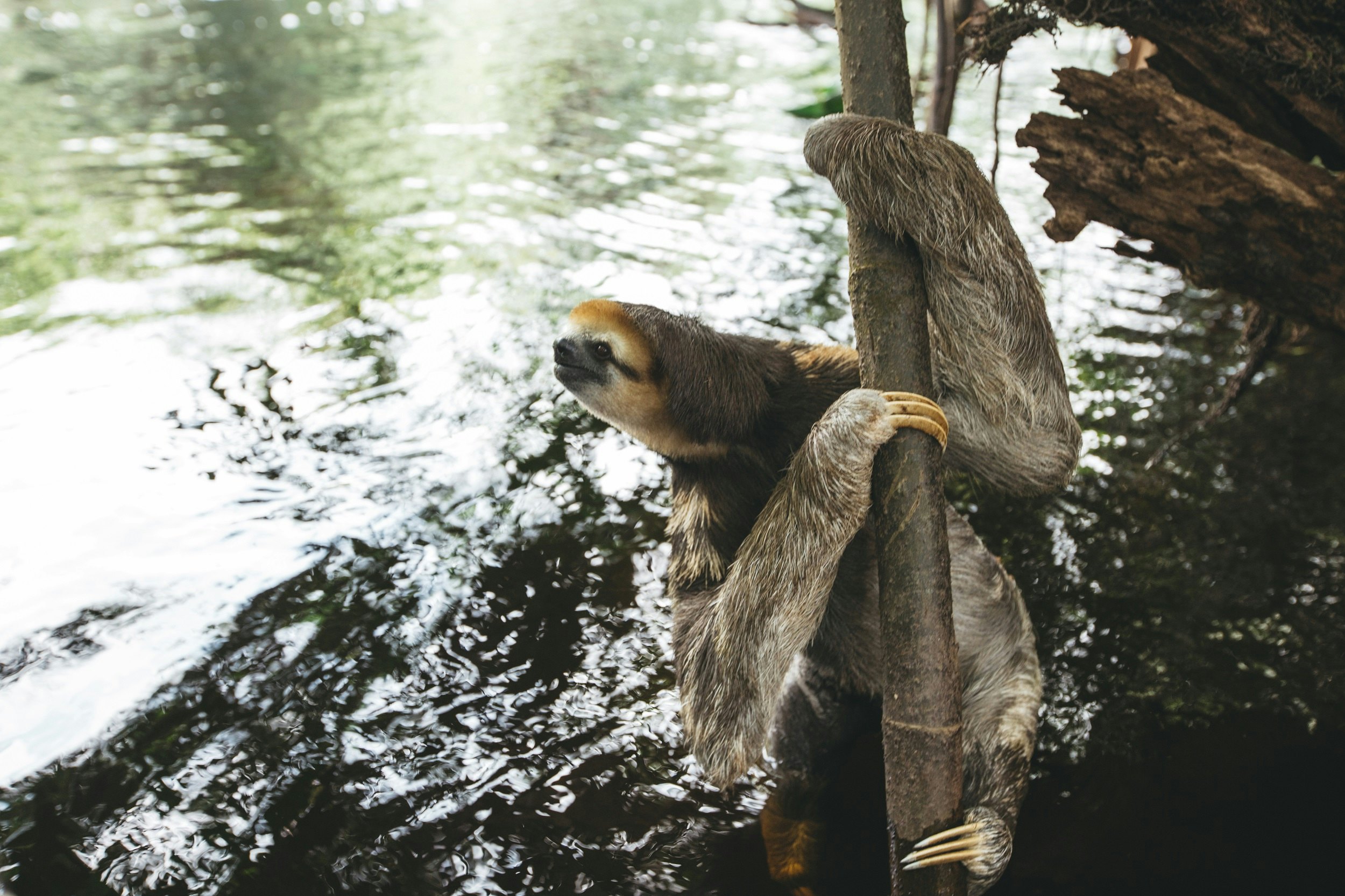
The 30 best countries, cities and regions to visit in 2025

Feb 10, 2020 • 6 min read

The spectacular Kaieteur Falls cascading 226m © Tim Snell / 500px
Sleepy Guyana, sandwiched between Venezuela and Suriname and cradled by the Brazilian Amazon, might just be South America’s best-kept wildlife-watching secret. One of the world’s most densely forested nations, this former British colony has a vast and largely pristine wilderness that is a sanctuary for a plethora of wildlife, including rare and unusual species, ranging from giant anteaters to cobalt-blue tarantulas.

Part of the Guiana Shield, one of the most biodiverse regions on the planet, Guyana’s wildness has played a key role in the preservation of its wildlife habitats. By the same token, this wildness has also presented challenges for tourism. In recent years, however, improvements to tourism infrastructure – largely led by Amerindian communities in Guyana’s interior – have increased travellers' access to its wildlife hot spots, as well as opportunities to explore them more sustainably. Here are six wildlife hangouts to include on your itinerary.

Surrounded by verdant jungle and plunging 226m over a sandstone cliff, Kaieteur Falls isn’t just one of the world’s highest single-drop waterfalls, it's also easily one of the most breathtaking. But it’s not the park’s only draw, with electric-orange Guianan cock-of-the-rock birds typically spotted near the path linking the top of the falls to the visitor center. And don’t forget to look for tiny golden frogs inside the giant bromeliads that line the trails. Overnight visitors are also likely to spot flocks of Kaieteur swifts come in to nest under the falls’ vast rock shelf.
Go there: Kaieteur Falls is only accessible by plane or a challenging multi-day hike. Scheduled return flights from the capital Georgetown on 12-seater aircraft with Air Services Limited and Trans Guyana Airways run at least four times weekly, pending weather and demand, but as these trips only allow for two hours at the falls, it’s worth considering a chartered option or visiting as part of a longer tour (see the Guyana Tourism Authority website for a list of local operators). The park’s sole guesthouse is very basic, with overnighters required to bring food and bedding.

If there’s one wildlife destination to rule them all in Guyana, it’s the river systems and savannahs of the nation’s remote southwest, with a typical itinerary seeing travellers hop between several North Rupununi eco-lodges. Highlights include community-run lodges such as Rewa and Surama, which both offer wildlife-watching safaris by boat and on foot (led by knowledgeable Amerindian guides). Also a community enterprise, Caiman House Field Station is known for its black caiman research programme, with visitors invited to join nightly patrols. Nearby, family-run Karanabu Lodge is renowned for its work rehabilitating rescued captive wildlife, particularly giant otters.

Deep in the Kanuku Mountains further south, Mapari Wilderness Camp may reward intrepid adventurers with jaguar and harpy eagle sightings, while to the west, family-run Waikin Ranch offers a taste of life on a working cattle ranch – it may include spotting giant anteaters on horseback. The South Rupununi is also slowly opening up for tourism, with its most recent opening, Wichabai Ranch, offering a crash-course on how to be a vaquero (Guyanese cowboy) along with wildlife-watching tours.
Go there: Enlisting a tour operator to handle the logistics of entering and travelling around the region (usually via a combination of flights and car transfers) isn’t just recommended, but is in most cases essential. Rewa, for example, is only accessible by boat. It’s also possible to reach the region via local bus from Georgetown, but be mindful that the arduous overnight journey on Guyana’s unsealed trans-national highway can take much longer during wet periods. For those who make their way to the Rupununi independently, pre-arranging lodge stays and transfers is a must.

Technically part of the North Rupununi, this 3710-sq-km reserve in Guyana’s jungly heart is a destination in itself. One of the world’s last pristine rainforests, the Iwokrama contains a particularly high species richness, making it one of the most likely places in Guyana to spot an elusive jaguar, and if luck is on your side, perhaps also a tapir or a giant armadillo.
The reserve has two main tourist lodges. Hummingbirds, macaws and red-rumped agoutis roam the grounds of Atta Rainforest Lodge, which is tucked in the forest at the southern end of the reserve, but most visitors come for the Iwokrama Canopy Walkway, a series of suspended walkways that put you at eye-level with red howler monkeys and birds galore. At the northern end of the reserve, Iwokrama River Lodge offers a wide range of wildlife-spotting activities on foot and by boat, and can also arrange excursions to the canopy walkway.
Go there: Both lodges are accessible from nearby airstrips, but as they are also positioned close to the highway, it’s a somewhat easier affair to take the local bus. On a good run from the capital the bus takes 12 hours to reach the Kurupukari Crossing on the Essequibo River, where Iwokrama Rainforest Lodge can collect you. Ninety minutes south, it’s a 1km walk from the highway to Atta Rainforest Lodge.

Snaking its way down the Acarai Mountains near the Brazil–Guyana border and towards the Atlantic Ocean northwest of Georgetown, the Essequibo is both Guyana’s longest river and one of its more accessible wildlife-watching destinations. A popular weekend getaway for Georgetown locals, the handful of lodges dotted along the banks and islands of its 20km-wide estuary offer wildlife-watching tours by boat, with likely sightings including sloths, toco toucans, several species of monkey, Amazon parrots and more.
Go there: On its own island, Baganara Island Resort has a charming colonial-style dining pavilion and a great beach. It can arrange day visits, but it’s worth carving out at least one night to make the most of prime wildlife-viewing opportunities at dawn and dusk.

An easy day trip from Georgetown, the Mahaica River is one of the best places in Guyana to spot its national bird, the hoatzin. A tropical bird the size of a pheasant with a spiky rufous crest, the hoatzin is also known as the "stink bird" for the foul odor emitted by the fermentation of food in its digestive system, which helps to deter predators. Despite habitat loss in the region due to sugar cane and other agriculture, the ecosystem lining the river itself has been well preserved, providing an ideal habitat for flocks of egret, heron, ibis, and various marsh tyrants along with hoatzins.
Go there: The mouth of the Mahaica River lies just 30 minutes’ drive southwest of the capital, but boat safaris currently need to be arranged via a Georgetown-based operator.

Stretching for more than 120km along Guyana’s ultra-remote northwest coast, the Shell Beach Protected Area is an important nesting area for 200 species of coastal and migratory birds, and four of the world’s seven species of sea turtle, which can be seen nesting between March and August. The river systems in the area are also great for harpy eagle spotting and tarpon fishing.
Go there: The Shell Beach Protected Area is typically accessed from Mabaruma airport near the Venezuelan border. Reached by boat, recently-opened community-run Warapoka Lodge makes a good base for exploring the area. Georgetown-based Wilderness Explorers can get you there.
You might also like:
Going it alone: top trips for solo travel
Lonely Planet's Travel Goals book will get you out of your travel rut
Sarah Reid travelled to Guyana with support from the Guyana Tourism Authority and Georgetown-based responsible tourism operator Wilderness Explorers. Lonely Planet contributors do not accept freebies in return for positive coverage.
Plan with a local
